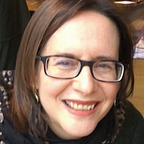Re-finding the “Me” in Meetings
Lately, in Central Park, I’ve been seeing trees necklaced in signs that read, “You can hug me.” Which brings to my mind, “How huggy am I feeling these days around people?” what with Delta variant cases on the rise. (Call me hesitant-huggy right now.) So isn’t it nice to be reminded that a tree is a living thing and perfectly safe to hug in these viciously viral times?
The signs also make me think of work meeting invites. As when a colorless one waves its hand on my calendar and it’s up to me to accept it as part of my week’s work schedule. Those invites invite me to pause, scan the other meetings on my calendar, ponder my workload, and consider the balance of meetings to independent work time. If I’m going to accept this one, do I need to boot another off my schedule? Work an early morning or evening perhaps?
According to Michael Hyatt, author of No Fail Meetings, such calendar invitations do not give most recipients pause. Instead, people fall victim to MAS or Mindless Accept Syndrome, and just click to accept the meeting invite. Often doing so with a groan or sinking feeling over their work time being co-opted for a questionably productive meeting.
IWBI’s Chief Commercial Officer introduced her team recently to concepts from Hyatt’s book, which is anything but a time-waster. In just 100 medium-print pages (about an hour’s reading time), he concisely states the five fundamentals for what makes a meeting useful, productive, inspiring and even fun. And he reminds us that a meeting invite is not something to leap at, but something to consider with caution: Who’s leading it? What’s the agenda? What’s my role? Is it significant enough for me to sacrifice an hour of work time? Like a sign hung on a tree, am I up for embracing this meeting or am I skeptical it’ll be worth my time? If the latter, trust that instinct and take a few moments to figure out why.
Meetings are only a waste of time if we allow them to be. If they’re not working for you, if they’re eating up too much of your time, then “It’s Up To You” to do something about it. That’s the subtitle of the very last section of Hyatt’s book. And the last two lines of the book are (spoiler alert!):
The difference between a good meeting and a bad meeting is you. So, kill or quit the meetings that aren’t needed — and revolutionize the ones that are.
Likewise, if you lead meetings, this book is a terrific guide to tightening up your meeting methods and ensuring that your meetings allow for engaging discussions and brainstorming, are efficient, and produce decisions and next steps.
So who’s up for a 1-hour empowering read that can get you thinking more strategically about meetings rather than just answering to them?
IWBI’s Workplace Wellness purchased Hyatt’s book for our interested staff because the volume of meetings many of us attend was a point of stress raised in a recent round of team conversations around how Workplace Wellness can better support staff through the remainder of 2021. Employees who thoughtfully prioritized their work and calendared time for independent projects, felt stuck when those time blocks drew near and internal meetings encroached upon them. This deprived staff of the autonomy needed to control at least part of their weekly schedule. The work piled up and so did the stress load they carried.
IWBI’s culture encourages staff to speak up and voice concerns and “stuck points” so that managers, leadership and, yes, Workplace Wellness, can step up and be responsive. This minimizes time spent in a stuck zone. And it’s likely that if one employee is stuck, others are too who have yet to speak up. So when we self-advocate, we help each other and help our company’s gears run more smoothly.
While I cannot mail non-IWBIers a copy of Hyatt’s book, I encourage you to purchase your own. (Ebooks go for $19.99 here.) Or, better yet, see if your Director of Workplace Wellness will gift you a copy. It may be just the hug you need right now.
